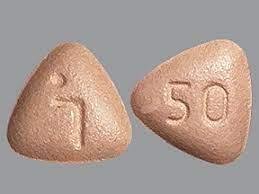Daridorexant Dosage
Medically reviewed by Drugs.com. Last updated on Sep 27, 2024.
Applies to the following strengths: 25 mg; 50 mg
Usual Adult Dose for:
Additional dosage information:
Usual Adult Dose for Insomnia
Recommended dose: 25 to 50 mg once per night, orally
Maximum dose: 50 mg
Comments:
- Take no more than once per night within 30 minutes of going to bed, and with at least 7 hours remaining prior to awakening.
- The failure of insomnia to remit after 7 to 10 days of treatment may indicate the presence of a primary psychiatric or medical illness that should be evaluated.
Use: Treatment of adults with insomnia
Renal Dose Adjustments
No adjustment recommended.
Liver Dose Adjustments
- Mild liver dysfunction: No adjustment recommended.
- Moderate liver dysfunction (Child-Pugh score 7 to 9): Maximum recommended dose of 25 mg no more than once per night.
- Severe liver dysfunction: Not recommended.
Dose Adjustments
Co-administration with Moderate CYP450 3A4 inhibitors:
- Recommended dose: 25 mg no more than once per night
Co-administration with Strong CYP450 3A4 inhibitors: Avoid use
Co-administration with Strong or Moderate CYP450 3A4 inducers: Avoid use
Precautions
US FDA requires a medication guide to assure safe use. For additional information go to: www.fda.gov/drugs/drug-safety-and-availability/medication-guides
CONTRAINDICATIONS:
- Patients with narcolepsy
- Patients with a history of hypersensitivity to the active ingredient or any of the components (angioedema with pharyngeal involvement has been reported)
Safety and efficacy have not been established in patients younger than 18 years.
Consult WARNINGS section for additional precautions.
US Controlled Substance: Schedule IV
Dialysis
Data not available
Other Comments
Administration advice:
- Initiate treatment only after careful evaluation of the patient. Failure to respond after 7 to 10 days of treatment may indicate the presence of a primary psychiatric or medical illness that should be evaluated.
- Should be taken orally no more than once per night within 30 minutes of going to bed.
- Should be taken with at least 7 hours of sleep remaining prior to planned awakening.
- Can be taken with or without food, however time to sleep onset may be delayed if taken with or soon after a meal.
- Advise patients about the potential for next-day somnolence. Caution against driving and doing other activities that require complete mental alertness.
- Particular caution is advised with elderly patients that are at higher risk of falls.
- Advise not to consume alcohol or take with other CNS depressants.
Storage requirements:
- Store at 20C to 25C (68F to 77F), excursions permitted between 15C and 30C (59F and 86F)
General:
- A Pregnancy Exposure Registry is available. Pregnant woman exposed to this drug and healthcare providers are encouraged to contact Idorsia Pharmaceuticals Ltd at 1-833-400-9611.
- Report suspected adverse reactions to Idorsia Pharmaceuticals Ltd at 1-833-400-9611 or contact the FDA at 1-800-FDA-1088 or www.fda.gov/medwatch.
Monitoring:
- In patients with psychiatric disorders monitor new or worsening depression or appearance of suicidal thoughts.
- Monitor appearance of complex sleep behaviors such as sleepwalking, sleep driving or engaging in other activities while sleeping. Discontinue immediately if a patient experiences a complex sleep behavior.
- Monitor respiratory function in patients with obstructive sleep apnea or chronic obstructive pulmonary disease.
Patient advice:
- Read the US FDA-approved patient labeling (Patient Counseling Information and Medication Guide).
- Take orally no more than once per night within 30 minutes of going to bed and with at least 7 hours of sleep remaining prior to your planned awakening.
- Take with or without food, however time to sleep onset may be delayed if taken with or soon after a meal.
- This drug causes next-day somnolence. Use caution if driving or doing any other activities that require complete mental alertness, especially if you are older than 65 years old.
- Do not consume alcohol or take with other CNS depressants.
Frequently asked questions
- Quviviq vs. Ambien: How do they compare?
- What is the mechanism of action for Quviviq?
- How do I get and use a Quviviq coupon or savings card?
More about daridorexant
- Check interactions
- Compare alternatives
- Reviews (163)
- Side effects
- During pregnancy
- Drug class: miscellaneous anxiolytics, sedatives and hypnotics
- Breastfeeding
- En español
Patient resources
Other brands
Professional resources
Other brands
Related treatment guides
Further information
Always consult your healthcare provider to ensure the information displayed on this page applies to your personal circumstances.


